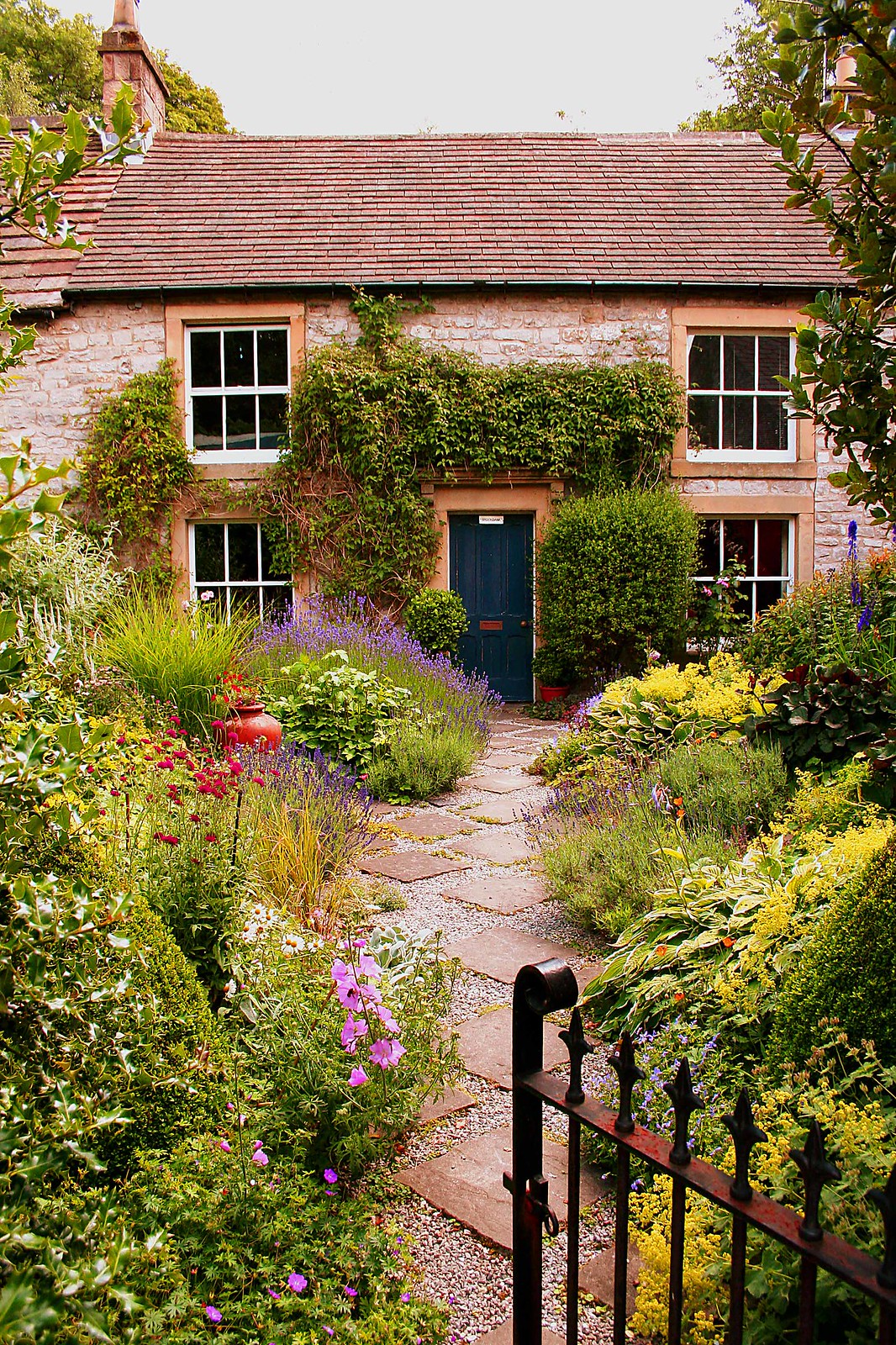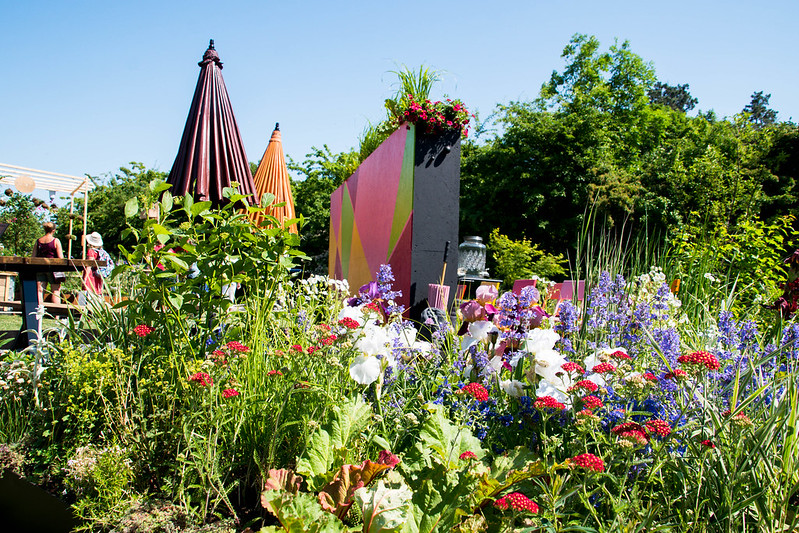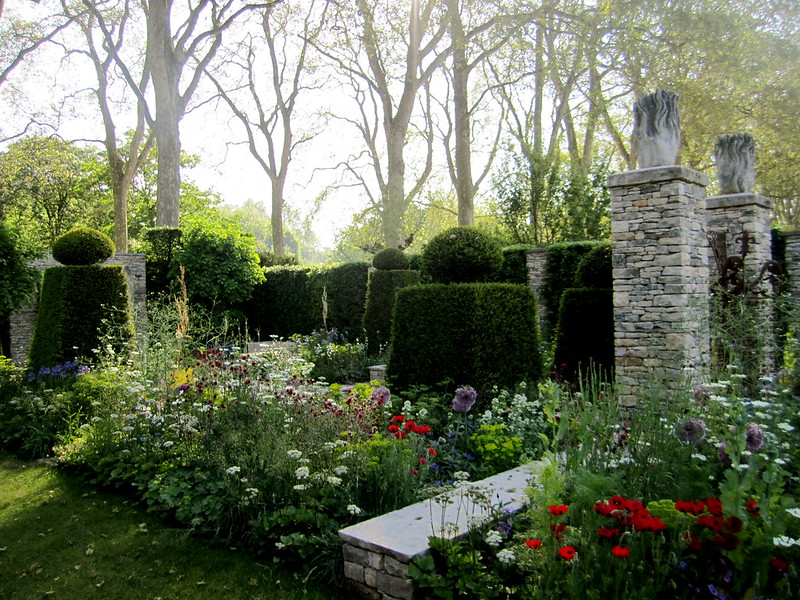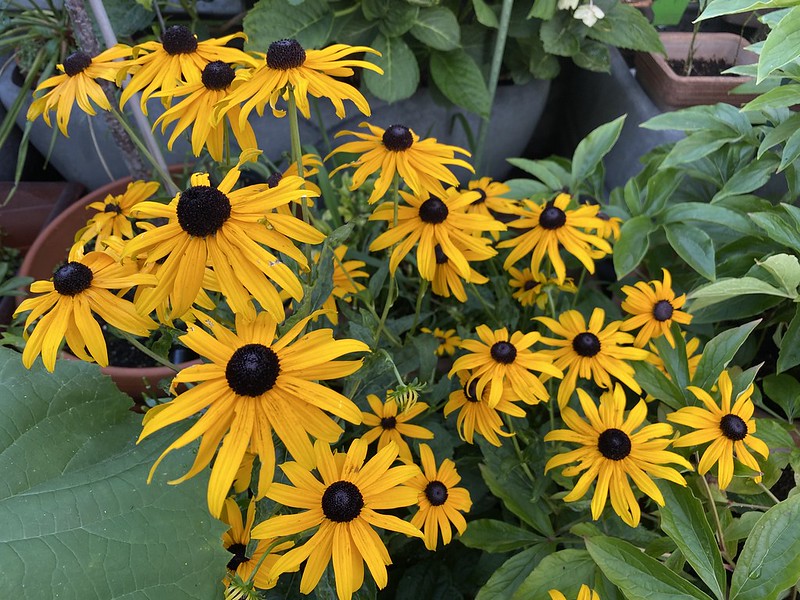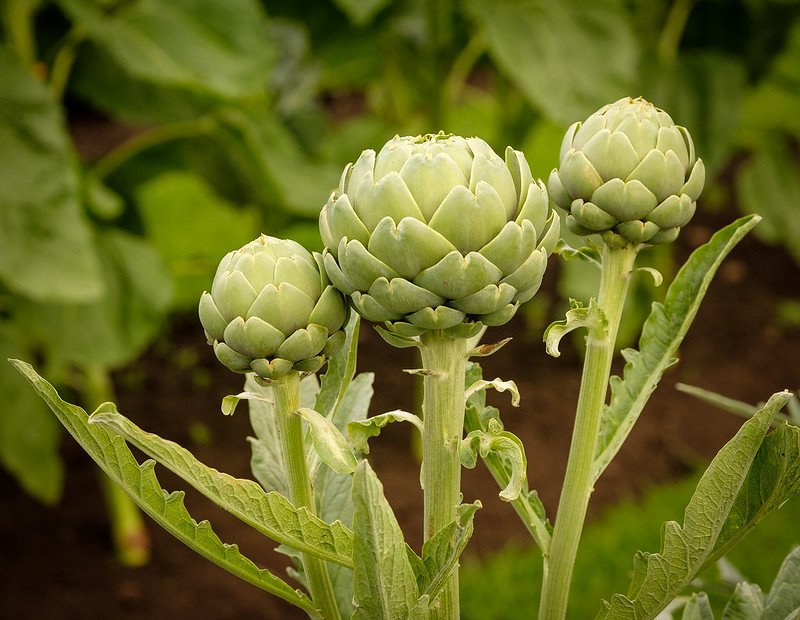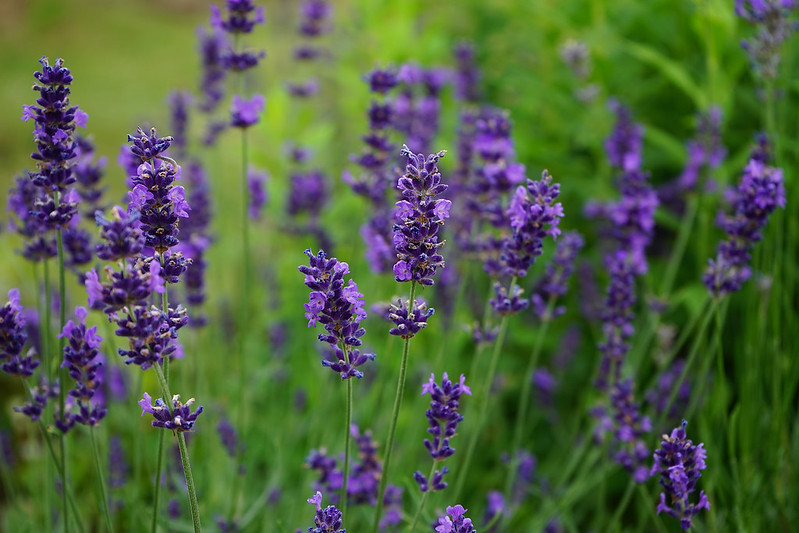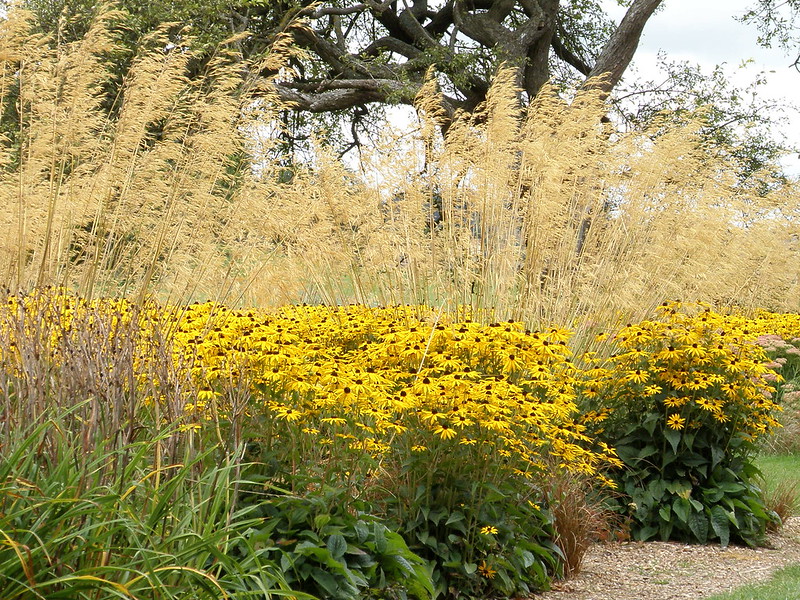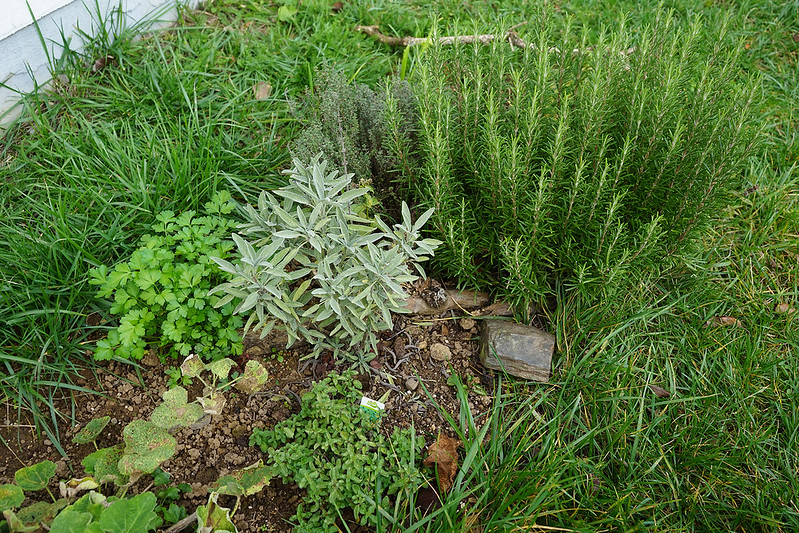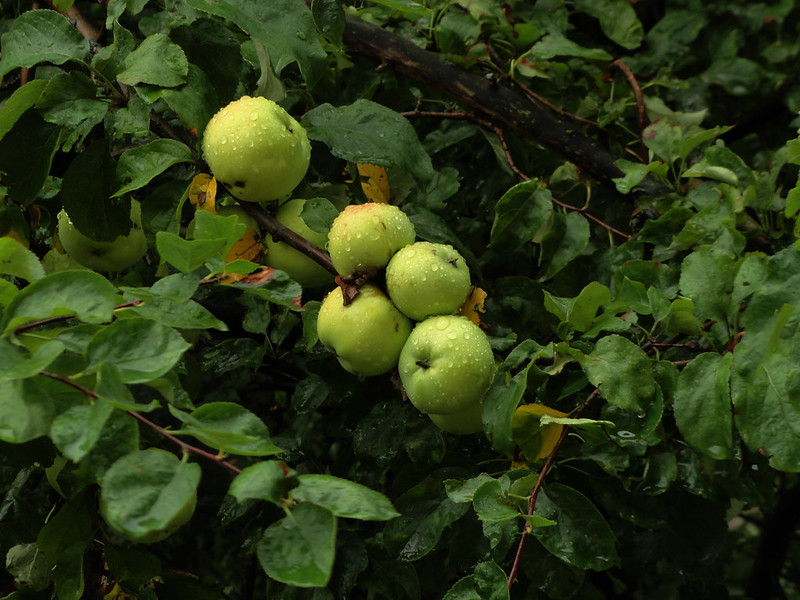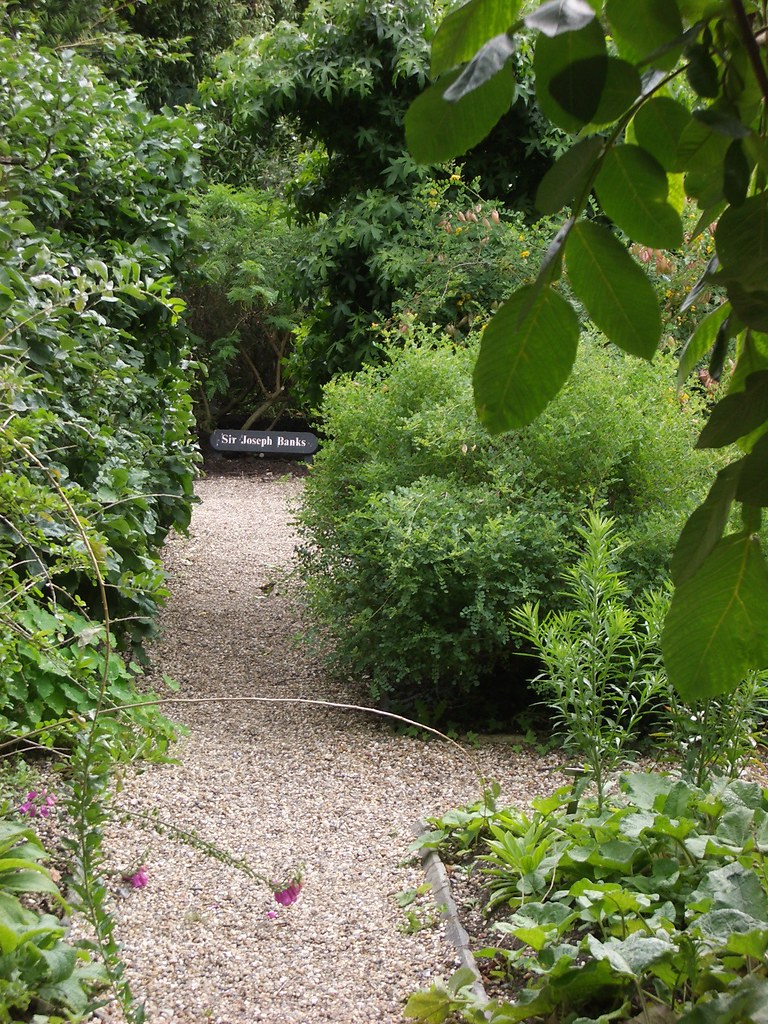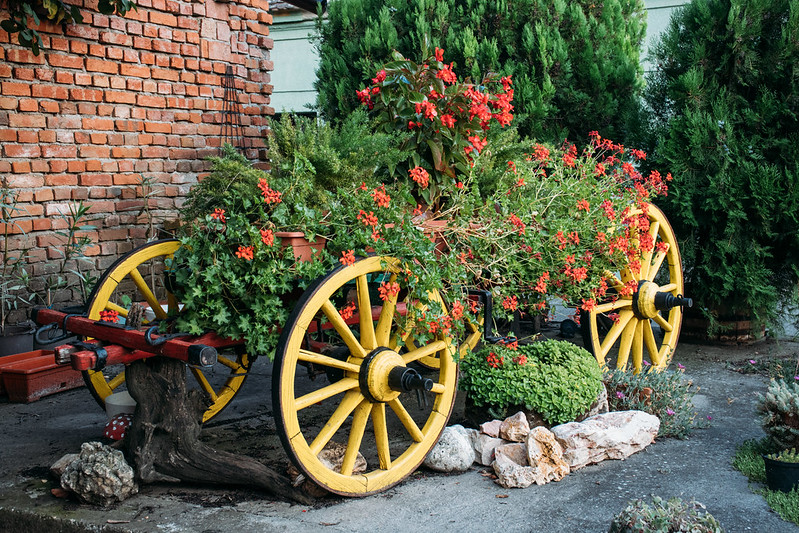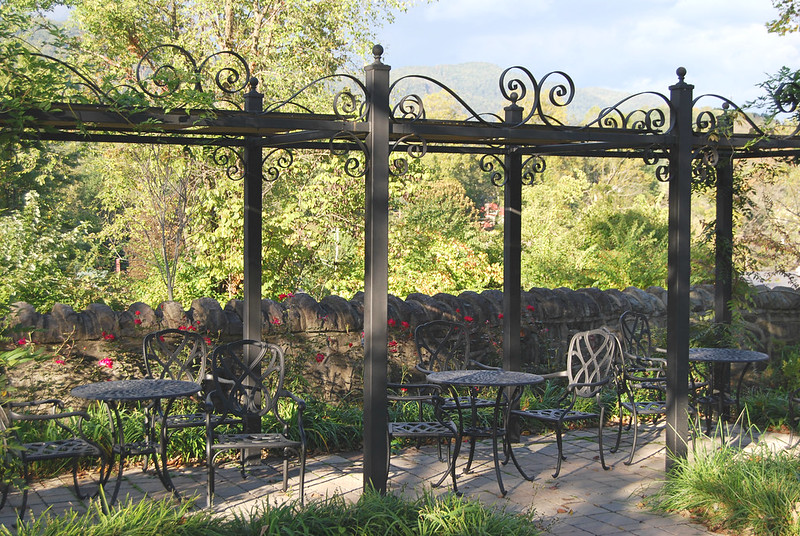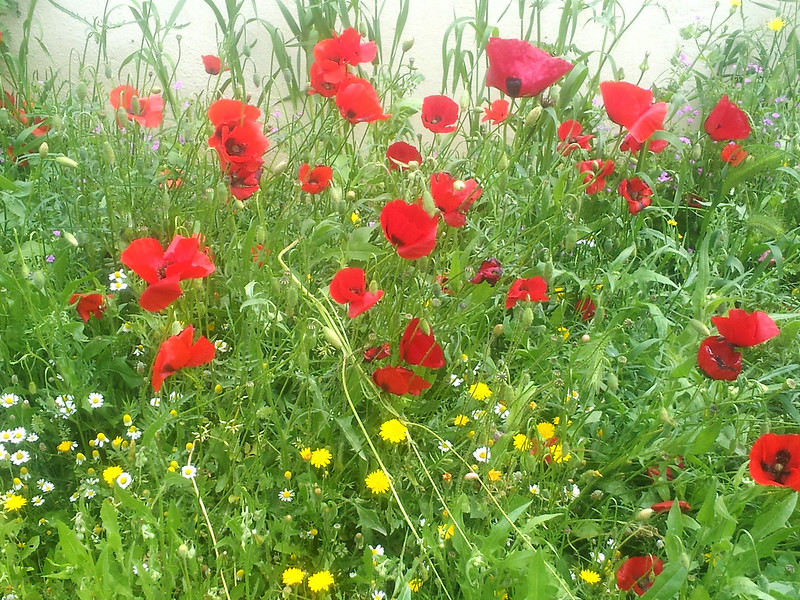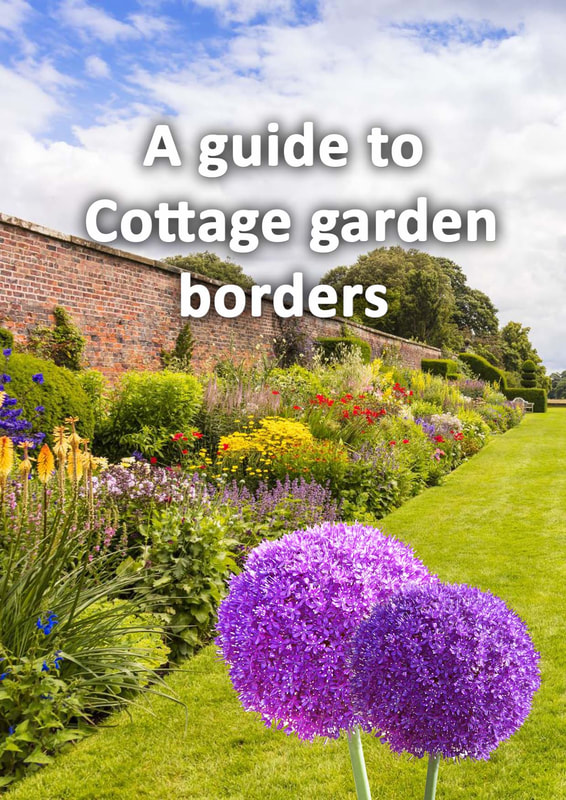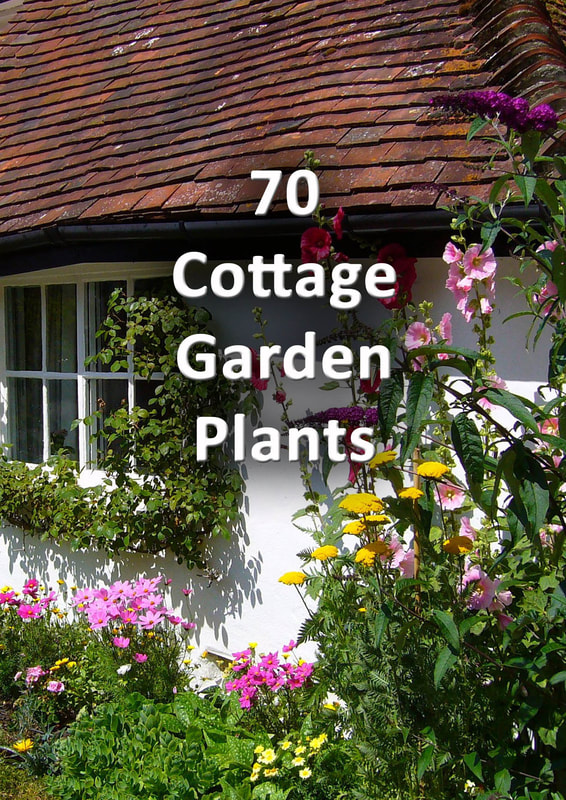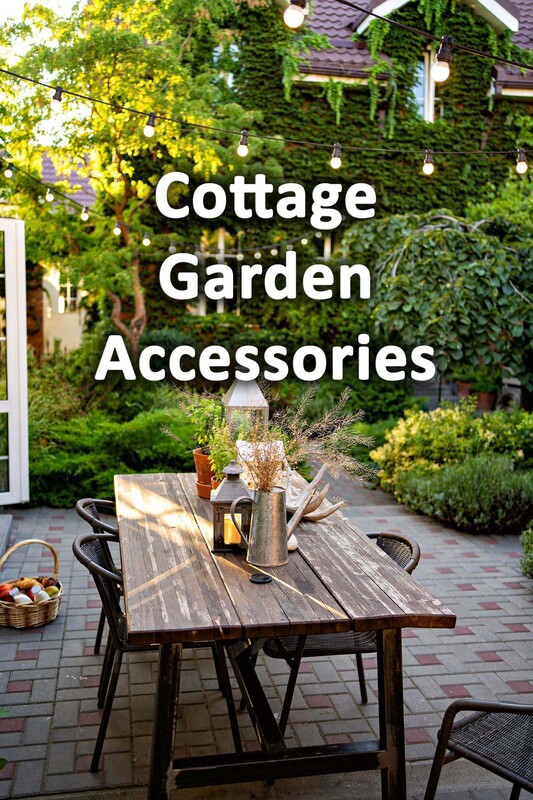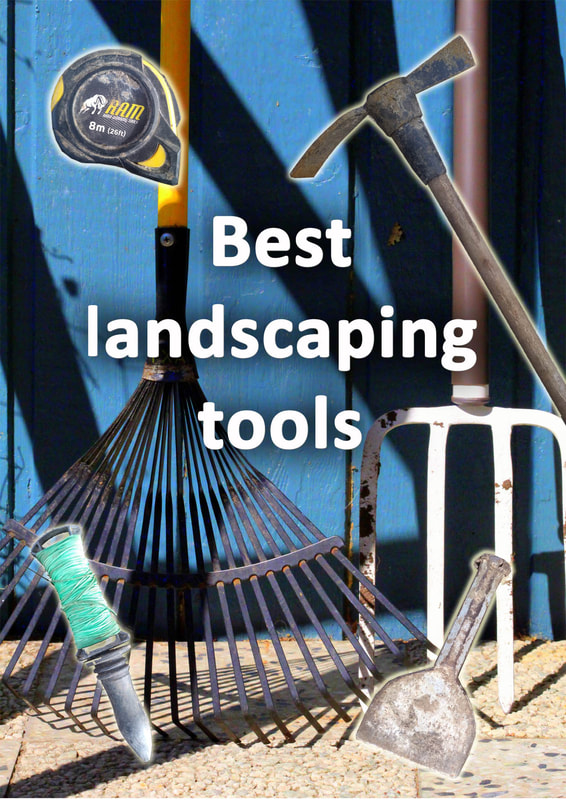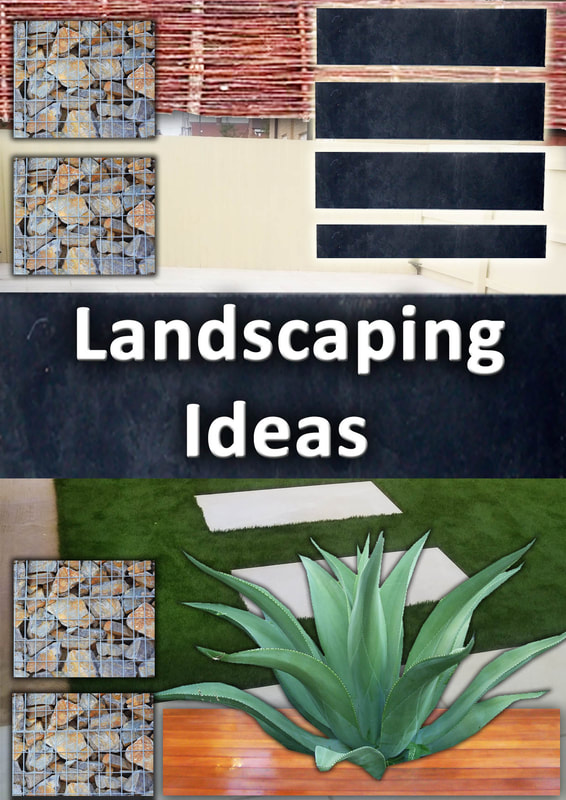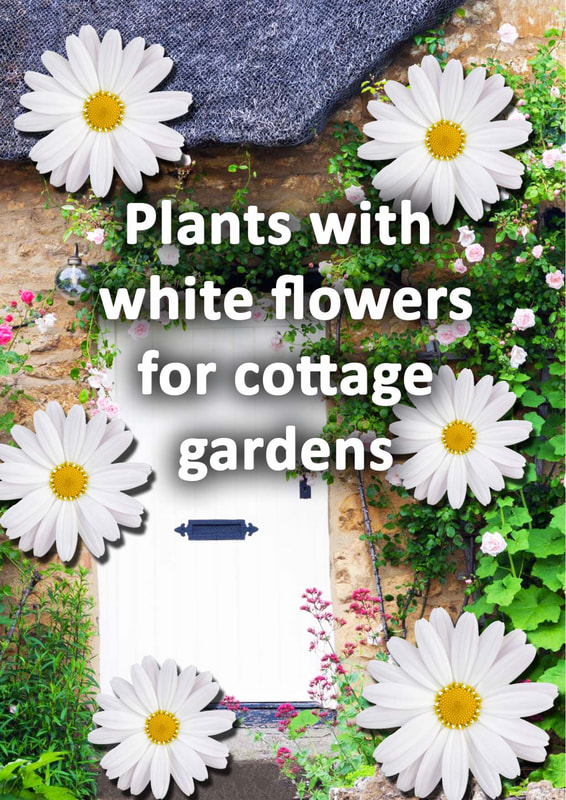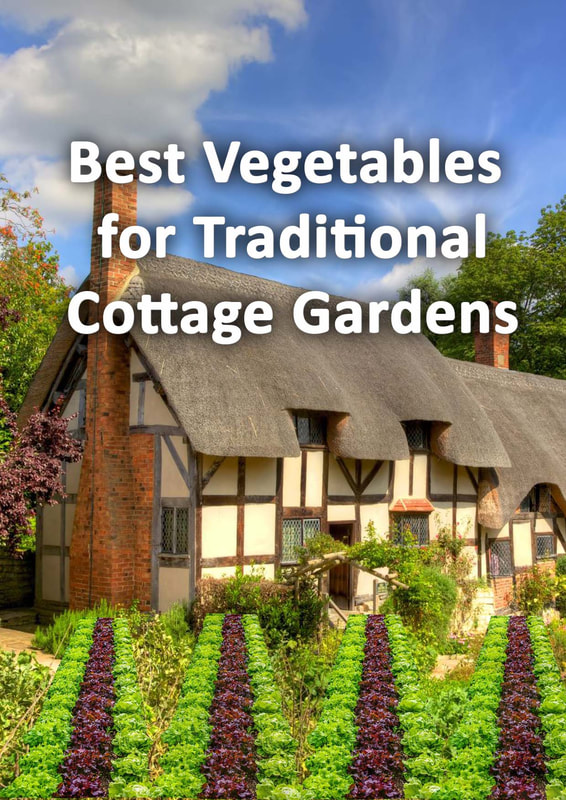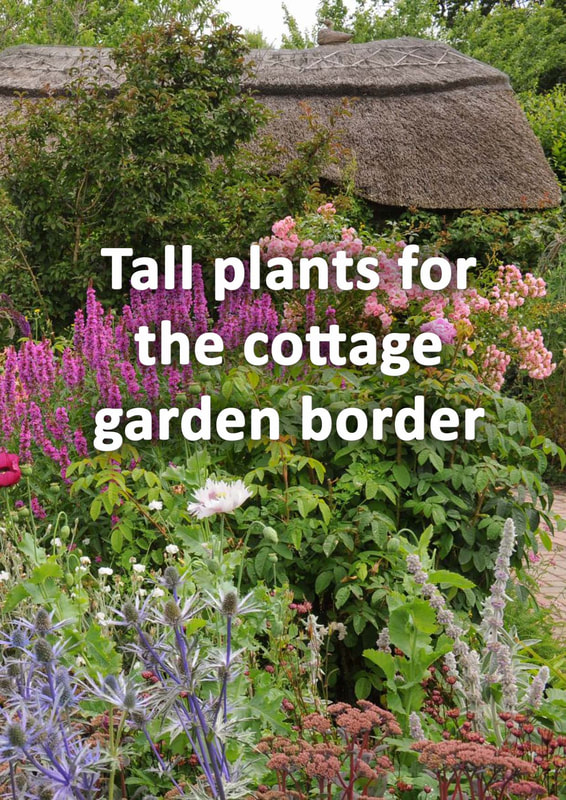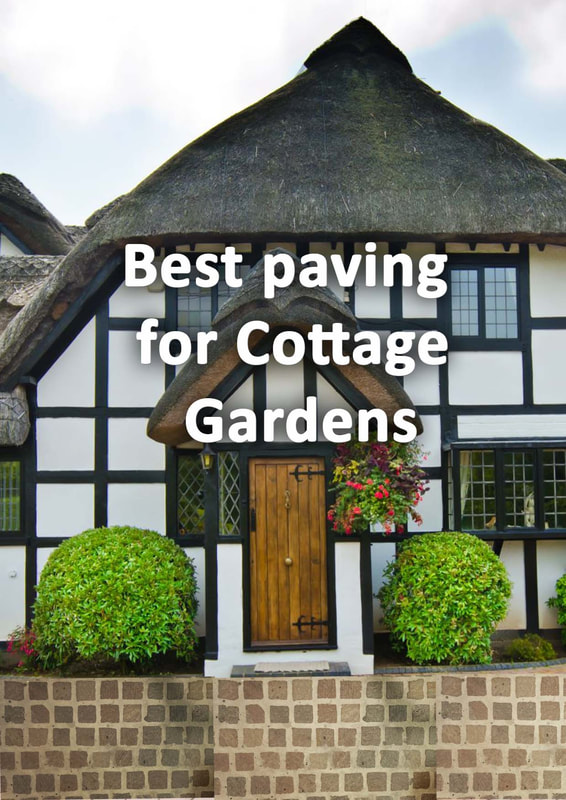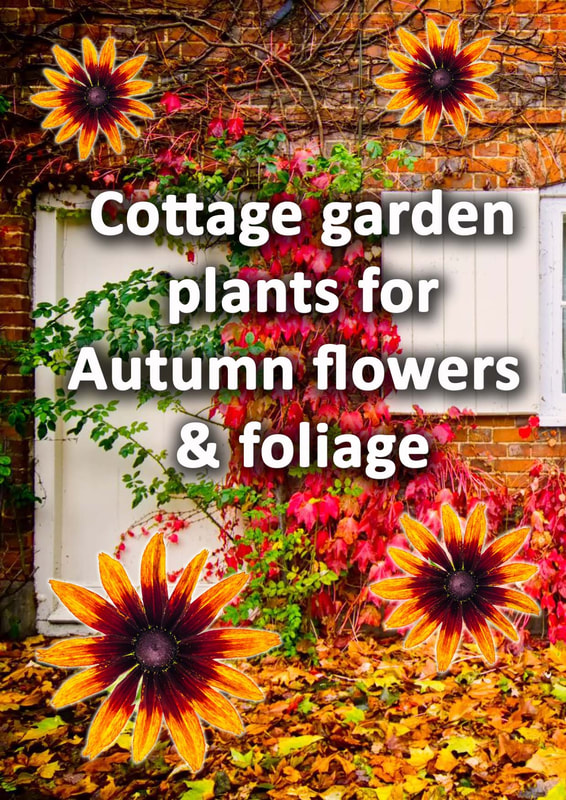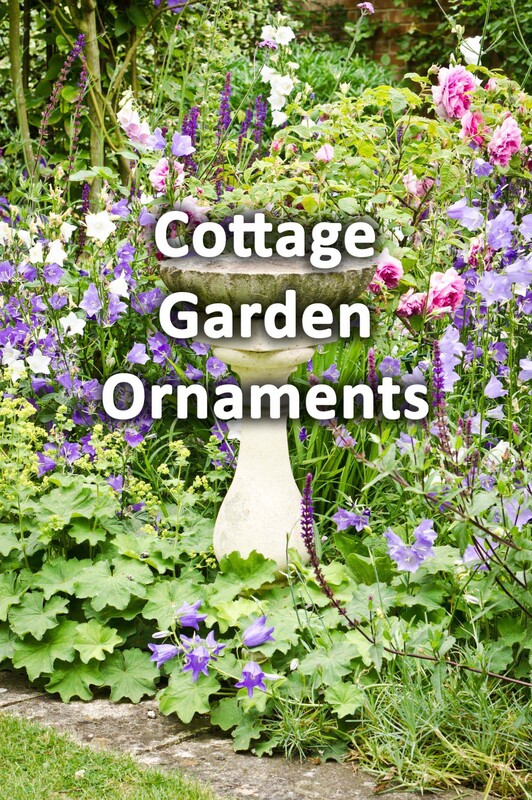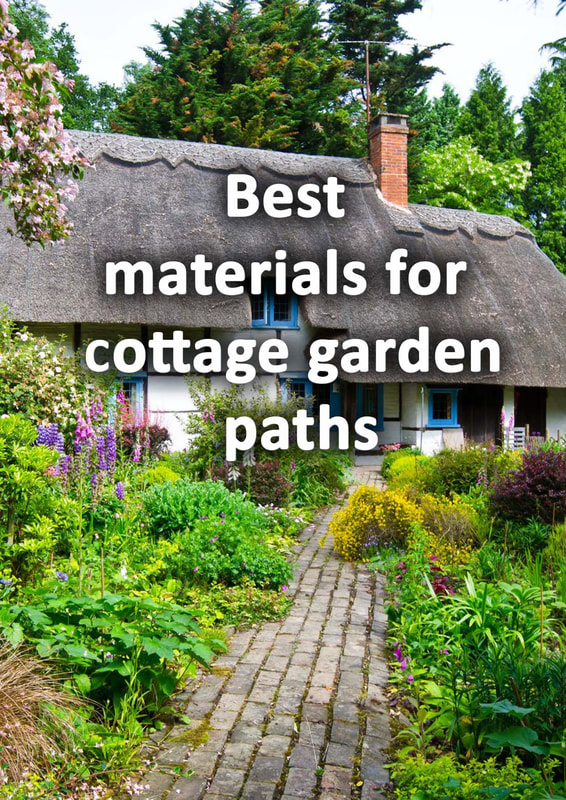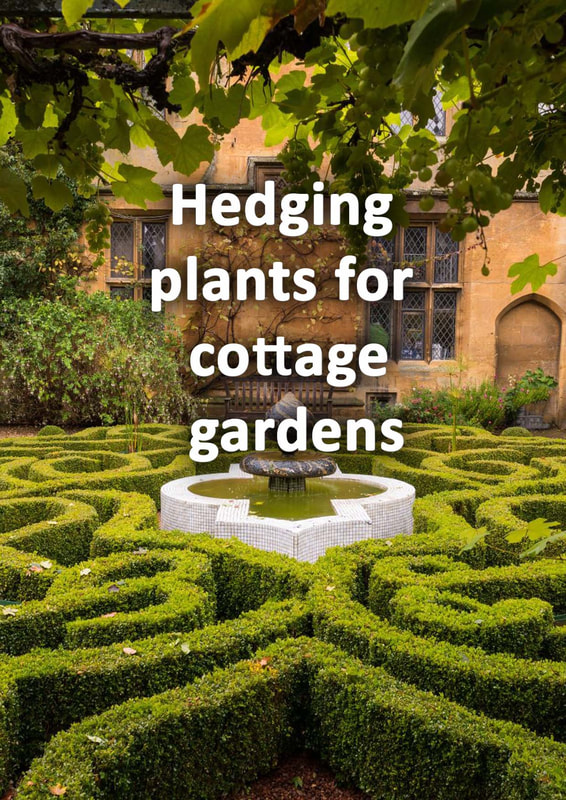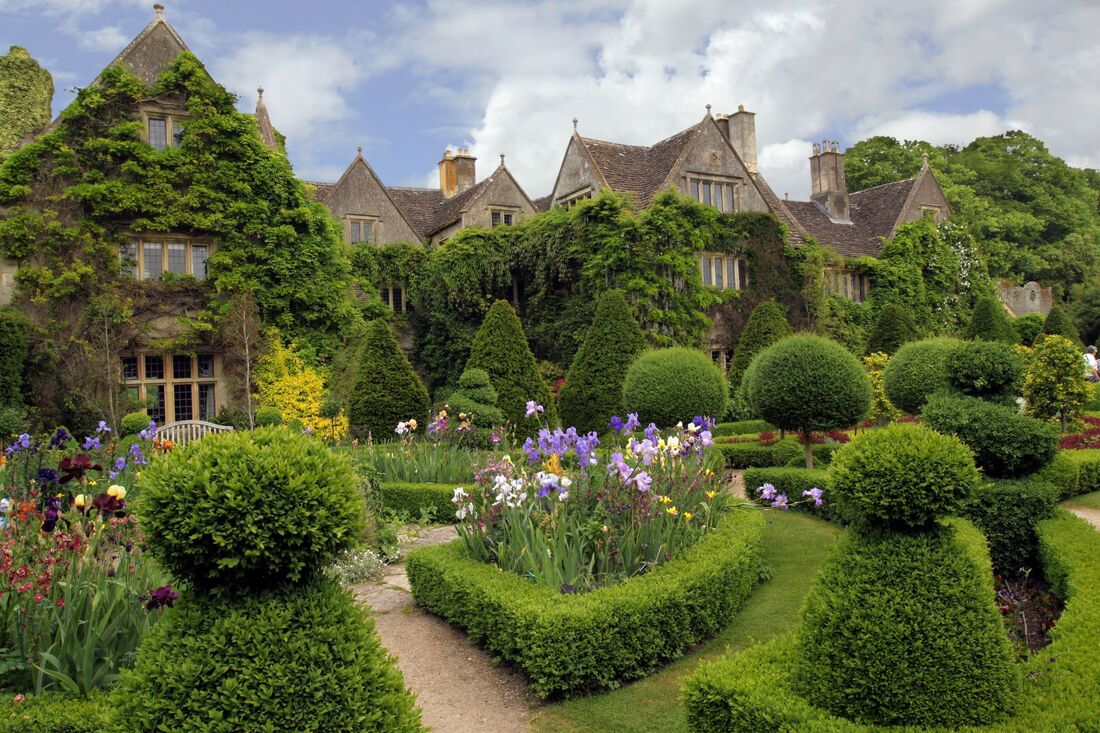|
This article contains affiliate links
There is probably nothing more picturesque than a traditional, English, cottage garden on a summer’s day. The cottage garden style has become famous over the years featuring in rural paintings and country magazines.
With their floral displays and rustic charm these gardens have a somewhat overgrown or wild nature. Flower borders are typically planted with tall perennials or annuals which self seed freely. This leads to flowerbeds with a ‘wild meadow’ effect and can also be very beneficial to wildlife. Traditionally cottage gardens are set upon a backdrop of traditional English cottages. These rural, stone buildings with their thatched roofs can be centuries old. Their charming character has led to a compete romanticism around the style of cottage gardens. However there is one thing about cottage gardens which make them truly versatile. Their theme and elements seems to be incorporated into almost any other situation, from small, urban gardens to contemporary garden design and modern courtyards.
Historically Cottage gardens were established out of necessity by farming peasants. These gardens were for growing fruits and vegetables as well as medicinal herbs and cut flowers. Consequently food growing is still an integral part of many modern, cottage gardens.
Back in the 1700’s there was a particular love of vibrant flowers. This combined with long, laborious, working hours led to the extensive use of perennials and self seeding annuals. Such flower borders require less intensive maintenance and almost form a dense meadow like thicket. These crowded out weeds and led to a sea of seasonal colour. If you want to create your own cottage garden in this article we have broken down their typical elements. This will help you to plan, design and implement your very own traditional, cottage garden paradise. Design
When designing your cottage garden or any garden you should always consider function first. What are the sites strengths and weaknesses? List these down on a piece of paper in separate columns.
Draw out a separate, existing plan of your garden and sketch out ideas on overlays of tracing paper. Try to maximise your sites strengths and design out its weaknesses. Perhaps you want to create a larger seating area in a sunnier part of the garden? One of the most important design elements of any new garden is circulation. Think about how you currently move around your garden and how this can be improved. For example if you have a herb growing area this is best positioned within close access to the kitchen. Cottage gardens are well known for their informal pathways, plan a circulatory path which will serve your movements well.
The most exciting part of designing your cottage garden is by exploring precedent images. Look at examples of cottage gardens online and collect ideas you like. These can include planting combinations, garden layouts or hard materials.
Take pictures of various angles and scenes of your existing garden. Using tracing paper, sketch out ideas over the top of your garden images. Eventually your sketches will start to evolve into hard proposals. These can now be sketched out onto a large scale plan of your garden. Designing any garden can be daunting if you have no previous experience. However this process can be a lot of fun! By finding precedent images of cottage gardens you like you can be sure to sketch out exactly what you want. Below we have added some cottage garden elements you may wish to include in your cottage garden. For more specific information on cottage garden design I recommend: Designing and Creating a Cottage Garden. Wide borders
Cottage gardens are famous for their large, wide borders full of flowers. As beautiful as these are creating them can be a daunting experience. When creating wide borders you may have to accept they may look bare until your plants become established.
Hence it is a good idea to dig over the borders well and then apply mulch to the soils surface. This will stop weeds from competing with your young plants. When choosing your plants try to go for hardy perennials and summer flowering bulbs. These will come up every year and divide freely helping you to fill up your borders quickly. Cottage garden plants
When most people think of cottage gardens they think of crowded beds with fountains of colour. Although this is typical there is a vast array of choice available that will work with this theme. There are even examples of Mediterranean plants such as palms and succulents which can work well in cottage gardens.
As a guide I would say try not to grow large, bushy shrubs and stick with things that are easy to maintain. Plants that maintain their natural form such as artichokes and grasses work well. Try to include plants with contrasting foliage and ones which flower at different times of the year. This will enable you to include as much seasonal interest as possible.
If you want to replicate traditional, cottage, garden, flower borders concentrate on planting flowers that come up every year. Summer flowering bulbs and perennial flowers such as Rudbeckia are perfect for such cottage garden borders.
Also include self seeding annuals like poppies which will dazzle the garden with colour every summer. Try to think about colour combinations that work well when planning cottage garden borders. For example reds and whites, yellow and blues and pinks and purples always work well together. Herbs
Herb gardens have a typical affiliation with cottage gardens and also have a functional element. Traditionally positioned next to the kitchen of the home, herb gardens can also become central features. Raised beds of herbs can be planted next to pathways or at the front of flower borders. Herbs can be organised spatially for specific uses such as medicinal herbs, herbs for teas and seasoning meats.
Fruit trees
As cottage gardens were always places of productivity it is very common to have the odd fruit tree. If you have a small garden you can grow a variety on a dwarf rootstock. Many old cottage gardens would make use of a sunny south facing wall to train figs or even peaches. In addition to providing a seasonal crop fruit trees also produce glorious spring blossom!
Soil
Cottage gardens have a reputation of having extremely fertile soil full of nutrients. This is because historically cottage gardens were a place to recycle household waste. Manure from livestock, kitchen scraps and ashes from the fire were continuously spread upon flower borders. This made them extremely nutrient rich resulting in beds full of healthy, robust plants full of flowers. When creating your cottage garden make sure new borders are dug deeply with plenty of manure.
Little lawn
Although most cottage gardens can have lawn areas grass is not something which is necessary. Most cottage gardens boast larger planting areas with wide, generous paths and gravelled surfaces. If you want to make a cottage garden perhaps consider not having a lawn. A great alternative to lawn could be a wild flower meadow. This can attract wildlife and only needs to be cut once a year!
Fragrance
Using fragrant plants is typical of cottage gardens and can add a real boost to the senses. This is commonly done with rose gardens which line pathways or surround seating areas. Of course there are many other great, scented plants such as Jasmine, Honeysuckle and Viburnum which are also effective.
Gravels
Gravels are a typical surface for cottage gardens and are cheap, free draining and effective! The best gravels for cottage gardens are generally light or buff colours which give surfaces a lift. One of the most typical gravels used is 10mm or 20mm pea gravel. Cotswold stone, Oxfordshire shingle and free binding gravels such as Breedon is also very effective.
Paving
Natural stone paving has always been effective in Cottage gardens and is usually contextual. For example in Wales slate is used or Cotswold stone in the Southwest. However a wide range of materials can work in a cottage garden especially if you go for a contemporary look. I find that buff Indian sandstone on the market today isn’t a bad substitute for old York stone. This paving is typically very good value for natural stone and works very well in cottage gardens.
Brick
Bricks are a truly English tradition and come in a wide range of shades and textures. Made from fired, clay excavated from deep in the ground these take on varying characteristics depending on where they were quarried.
This gives bricks a contextual element with them commonly being used in cottage style gardens. Bricks can acquire more character as they age adding to the rustic cottage aesthetic. Typically bricks are laid into cottage garden paths using a basket weave or herringbone pattern. Recycling
Recycling has always been a theme of cottage gardens which adds to their quirky nature. Generally gardens of agricultural peasants resourceful landscaping has always been a feature of cottage landscaping. Some examples of these include using old baths for raised beds and making sculpture from rusty waste metal. Perhaps you also have some ideas for some cool recycling in your own cottage themed garden?
Statues
Very typical of classical and English gardens statues are also elegant accompaniments to cottage gardens. From stone animals to religious figures, statues are a great way to create a focal point in a space.
Pergolas
Pergolas are a great way to add height and a vertical line to garden spaces. These can provide shade in very sunny parts of the garden as well as support for grape vines and scented climbers. Pergolas can be custom built from external grade timber or bought in kit form. These can range from simple structures to more elaborate extensive canopies. All are very effective in cottage gardens.
Quirky decor
There is something about cottage gardens which just make them accommodating to all kinds of unusual decor. This allows you to celebrate more personal, garden elements which would be more of a stretch with other design themes. From plaques with funny gardening quotes to unusual ornaments the opportunities are endless.
Cottage gardens for wildlife
Due to the dense plantings and informal nature of cottage gardens they lend themselves very well to wildlife gardening. Full flower borders provide plenty of food and cover for invertebrates, insects, amphibians, reptiles and small mammals.
Adding extra wildlife habitat to cottage gardens can be as simple as digging a pond or seeding a wild meadow. There are also many smaller installations which can attract extra wildlife to your project. Some of these include; bird boxes, bat boxes, feeding platforms, bug hotels and hedgehog homes.
Making a cottage garden can be a fulfilling and rewarding way to landscape your garden. You don’t have to live in a thatched cottage in the heart of England to do so either. With a combination of good design, planting and hard landscaping you can make the perfect cottage garden which works for you.
Cottage gardens can easily work well with other garden design themes and architectural styles. By integrating elements in this article you can have the perfect, personalised cottage garden even if you live in the centre of a busy town. For more cottage garden inspiration I recommend: Cottage Gardens a Celebration of Britain's most Beautiful Cottage Gardens.
Thinking of designing and building your own cottage garden? Why not visit our useful resource page and recommended landscaping tools article here.
If you require a landscaper, landscape gardening or garden design services why not contact Paul and his team. Our landscape services cover Buckinghamshire, Oxfordshire Hertfordshire and the Chiltern region.
Some of our typical project locations include; Amersham, Aylesbury, Beaconsfield, Berkhamsted, Chalfont, Chesham, Gerard's Cross, Great Missenden, High Wycombe, Princes Risborough and Wendover.
0 Comments
Leave a Reply. |
The Author
|
Landscaping services across Buckinghamshire, Amersham, Aylesbury & High Wycombe
Hyde Heath, Amersham, Buckinghamshire |
|

